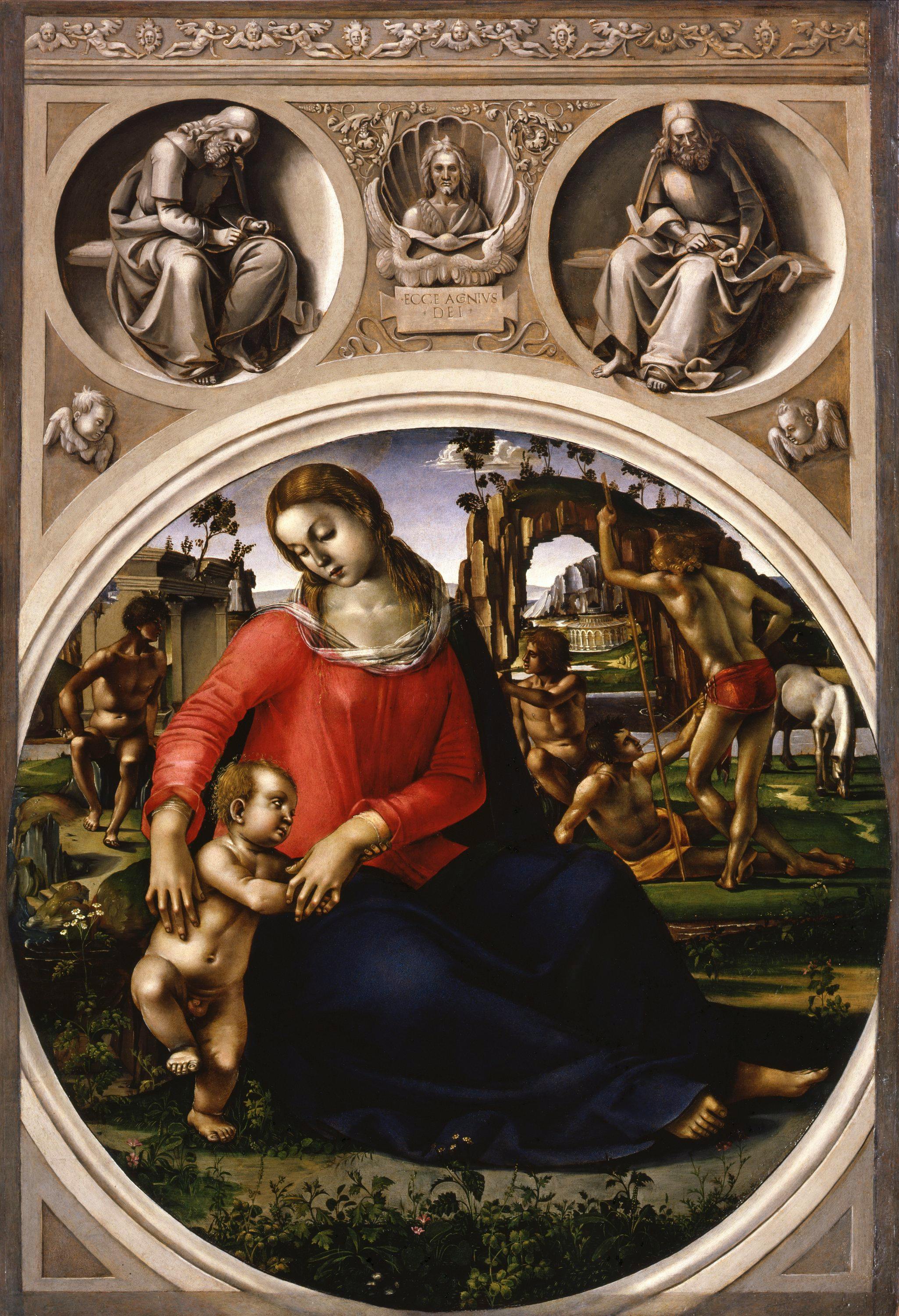Madonna with Child
Luca Signorelli (Cortona 1445 c. – 1523)
The work has many unique details, beginning with the shape: the “tondo”, the traditional round shape favored for religious paintings destined for private residences and the magistrates of the Florentine Republic, is framed with a false frame in carved stone adorned with the figures of two prophets intent upon their writing and, in the center, the bust of Saint John the Baptist. The monochromatic tones of the frame serve to enhance the vibrancy of the image of the Madonna, humbly seated on the ground in a natural setting surrounded by the ruins of ancient monuments and absorbed in the care of the baby Jesus, whose nudity emphasizes his human nature. The figures clustered in the background are also nude; the significance of this is unclear, although one interpretation could be the representation of mankind before the time of the Law of Moses and the coming of Christ; similar ‘ignudi’, or nude figures can be seen in the background of the Holy Family by Michelangelo, also housed at the Uffizi. The iconographic complexity of the work, as well as the unusual layout, seem to suggest a cultured, refined and avant-garde client. Originating from the Medici villa of Castello, according to Giorgio Vasari (1568) the painting was carried out for Lorenzo de’ Medici; this is most likely not Lorenzo the Magnificent but rather his cousin, Lorenzo di Pierfrancesco.
